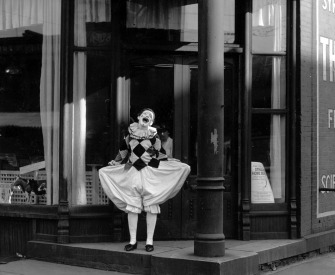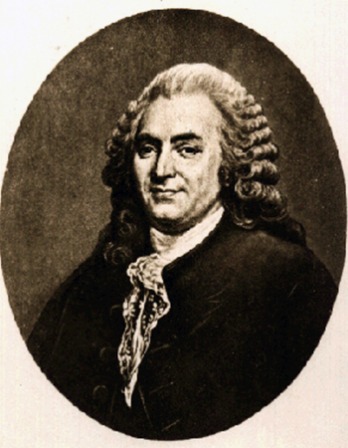A woman’s greatest glory is to be little talked about by men, whether for good or ill.
—Pericles, 450 BCAgainst Appearances
Orson Welles became a star not by creating some great work, but by simply scaring the hell out of people.
By Bruce Bawer
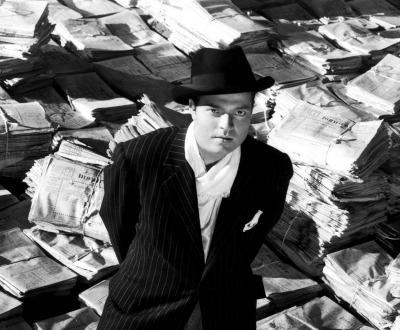
Portrait of Orson Welles for Citizen Kane, 1940.
Not long before the star, co-writer, producer, and director of Citizen Kane died at the age of seventy on October 10, 1985, The New York Times Magazine ran a cover story by his authorized biographer, Barbara Leaming, under the title, “Orson Welles: The Unfulfilled Promise.” The phrase resurfaced three months later in the Times obituary, which also described Welles as a “boy wonder”—and, a few paragraphs later, as a “Wonder Boy”—who was touched by “genius” but who had failed “to realize his dreams.” While focusing on the triumphs of Welles’ teens and early twenties, the obit said little about his later works, preferring instead to dwell on the “controversy” and “polemics” he inspired. There were also generous quotes from such Welles detractors as Broadway critic Walter Kerr, who called him “possibly the world’s youngest has-been.”
From midcentury onward, few Americans would have challenged the idea that Welles was washed-up. The members of the baby-boom generation, myself among them, knew Welles was a great director who, before we were born, had directed the greatest film of all time. Hardly any of us had ever seen it. What we did see was Welles the talk-show raconteur—a regal, bearded figure whose imposing physical presence, magisterial baritone, and combination of gravitas and good humor commanded the small screen like a colossus. His erudite, entertaining conversations with Johnny, Merv, and Dick Cavett gave the impression that he had read everything, been everywhere, known everybody. His life rarely required embellishment, but when the TV cameras were rolling, Welles merrily embellished away, spinning improbable stories about how he’d met Hitler and how his father had broken the bank at Monte Carlo. There was also Welles the TV pitchman, for millions of us his voice forever to be associated less with a soliloquy from King Lear than with the bemusing assurance that Paul Masson “will sell no wine before its time.” Or again, in still another persona, Welles was the purveyor of Kulchur to mainstream America, reciting Romeo’s dying words on I Love Lucy, delivering to The Dean Martin Show a speech by Falstaff.
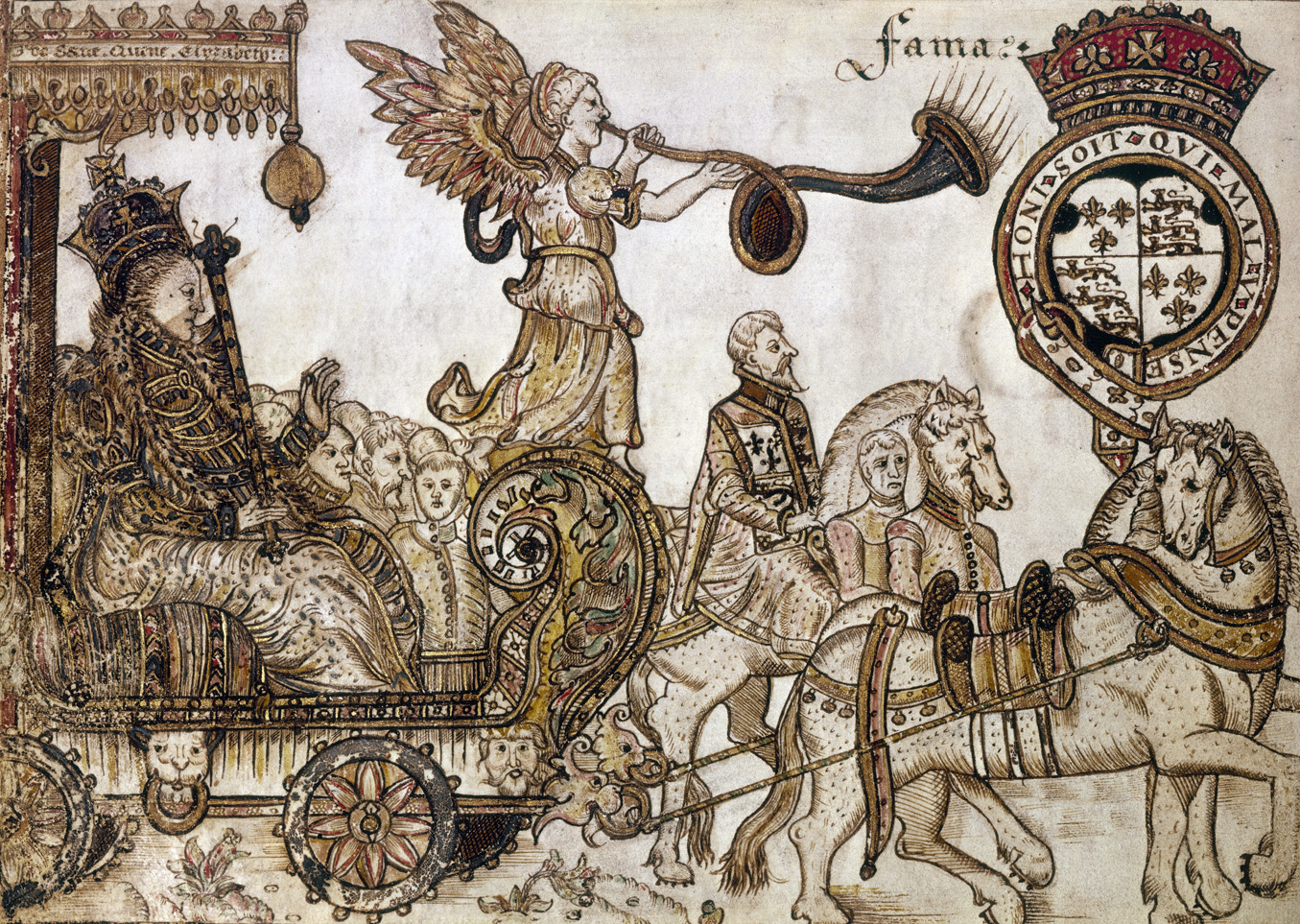
Queen Elizabeth I in procession, her carriage displaying a statue of Fama, from a manuscript dedicated to the queen, by William Teshe, c. 1584. © HIP, Art Resource, NY.
Who else but a great man would be invited on those TV shows to strut and fret a few minutes upon the stage as a sort of emissary descended from the mysterious heights of high culture when such things still mattered? It was the golden age of the American middlebrow, the era when Will and Ariel Durant were busy popularizing history and philosophy, and Isaac Asimov and George Gamow were performing the same service for science. Like them, Welles made the difficult things he loved accessible to the masses. He knew how to package even
Shakespeare in such a way as to make the Bard digestible, sandwiching soliloquies, for example, between magic tricks and comedy skits. Welles, who had played many monarchs over the years, was himself a sort of high-culture version of King Michael of Romania—one of those sometime sovereigns whose stationery still bore royal seals even though their kingdoms no longer existed.
But for us kids he was a “pure” celebrity in much the way that Paris Hilton is today, a person whose fame floated free of any accomplishment to which we’d actually borne witness. Had we been asked to name a movie director, Welles would have come to mind first, even though we’d never seen a frame of his work; at the same time we’d seen countless films whose directors we wouldn’t be able to identify under threat of death or dismemberment. Who directed Mary Poppins, or even The Wizard of Oz? The only name that loomed remotely as large as Welles was Hitchcock, but even he was just the “master of suspense,” not the Great Director, the supreme cinematic artist. It was Welles who introduced us to the very concept of Great Director: thanks largely to him, Spielberg, Scorsese, Coppola, Lynch, and Tarantino have become household names. None of these men, however, would ever come close to matching the aura of Welles. Certainly none of them had a backstory to compare with his.
Born in Kenosha, Wisconsin, in 1915, Welles was a child prodigy who at the age of ten was profiled in a Madison newspaper that exclaimed over his “fluent command of the language” and acquaintance with “books far beyond his years.” He was a gifted musician but had dropped music when his mother died; after his father’s death, the boy ended his formal education at fifteen and went to Ireland to sketch the countryside. After presenting himself as a star of the New York Theatre Guild to the management of Dublin’s famous Gate Theatre, he was cast in a leading role—and received rave notices. At seventeen, he coedited Everybody’s Shakespeare, a successful series of abridgements for high-school students.
Soon he was in New York, working as a writer, actor, and director both on stage and on air, churning out radio dramas with staggering speed and felicity—he took part in hundreds of radio broadcasts in his lifetime—and speaking into microphones with a seemingly inborn authority. Arthur Miller recalled decades later, “Welles’ genius with the microphone; he seemed to climb into it, his word-carving voice winding into one’s brain. No actor had such intimacy and sheer presence.” At twenty, Welles won praise for an all-black production of Macbeth in Harlem, a venture that was motivated partly by his sincere concern for racial equality and partly by a well-nigh incomparable appetite and talent for getting his name in the papers. In 1937 he and John Houseman formed the Mercury Theatre company and began producing stage and radio plays, one of which made him internationally famous when the innovative faux-newscast approach of his CBS radio adaptation of War of the Worlds sent citizens across the country into a panic, fearing the earth was under attack by Martians.
Despite his wide range of formidable gifts, he became a star not by creating some great work but, quite simply, by scaring the hell out of people. And since this was a time when Hollywood rushed to snap up anyone who’d made a splash in New York, Welles was summoned westward. True to his contrarian nature, he turned down the first few offers, saying that he was not particularly eager to make motion pictures. Why, then, did he agree to become a director? “We’re in the age of film,” he later declared. “Film is at the heart of life.” Whether or not this sentiment was truly uppermost in his thoughts when he refused those initial entreaties, the effect was to make the studios take their bids higher and higher. Consequently, the two-picture deal he struck with RKO in 1939 was unique. Not only did the studio sign him to produce, direct, write, and act in two features, it gave him absolute autonomy: he’d get final cut of his films and wouldn’t have to show them to any studio heads until they were done. The unprecedented contract terms, and the perhaps equally unprecedented hard-to-get act that had precipitated them, produced effusive copy in newspapers across the U.S. They also won him instant enemies in the movie capital. “No other newcomer’s arrival in Hollywood,” reported the Saturday Evening Post at the time, “ever caused so much indignation as Welles’.” His attitude didn’t help. Even his co-writer on Citizen Kane, Herman Mankiewicz is reported to have said, “There but for the grace of God, goes God!” One of his biographers, David Thomson, stated that in Hollywood, “From July 1939 to August 1942, Orson Welles…made…a tactless, eternally incriminating assault on the notion of the proper ways things were done.” Had anyone ever done such a good job of cutting a public figure while at the same time cutting his own throat?
And so he made Citizen Kane. Welles drew his cast largely from his Mercury Theatre ensemble, later suggesting that his chief strength while filming Kane had been his ignorance. Because he was totally unfamiliar with the process, he did things—with the enthusiastic collaboration of his top-drawer cinematographer Gregg Toland—that supposedly couldn’t be done; deep focus and low-angle shots are only two of the many now familiar techniques that Kane introduced. The main difficulty, however, was not making the film but getting it released. When word got out that Welles was making a picture based on the life of William Randolph Hearst, representatives of the newspaper magnate’s empire threatened not only RKO but the entire movie colony. Welles, of course, had to have realized the old man would not take it lying down. He’d chosen as the subject of his first picture one of the few Americans outside of New York, Washington, and Hollywood who made even bigger headlines than he himself did—and who actually dictated the headlines in the first place.
Welles got more than he bargained for. Hollywood moguls were terrified that Hearst, a noted anti-Semite, would make a national issue out of the Jewish influence in Hollywood, a prospect not to be taken lightly in 1941. So intense was this fear that MGM even offered to buy Kane from RKO and destroy the negatives to ensure the film would never see the dark of a movie theater. But Welles, in what Kane’s editor, Robert Wise, called his “greatest performance,” urged RKO brass not to cave to a tyrant in the midst of a world war against fascism. His plea worked: Citizen Kane went into release. Yet while the film won respect, it lost money—partly because many exhibitors, fearing Hearst, refused to show it. The controversy sapped Welles’ power in Hollywood even as it enhanced his celebrity.
Kane was not ignored at the Oscars for 1941: Welles and Mankiewicz shared the award for Best Original Screenplay. Befitting the temper of the times, the nods for Best Picture and Best Director went to How Green Was My Valley, a sentimental story about a Welsh mining family. Very few Americans, one suspects, saw this as an outrage. Only years later did critics and directors who’d seen Citizen Kane in their formative years elevate it in a way few had foreseen. In 1959 François Truffaut said that it “consecrated a great many of us to the vocation of cinéaste”; Martin Scorsese said that its director “inspired more people to become filmmakers than anybody else in the history of cinema.” In 1952, Citizen Kane was absent from the film magazine Sight & Sound’s decennial list of the ten best pictures of all time; in the 1962 critics’ poll it held the top spot, where it has remained ever since.
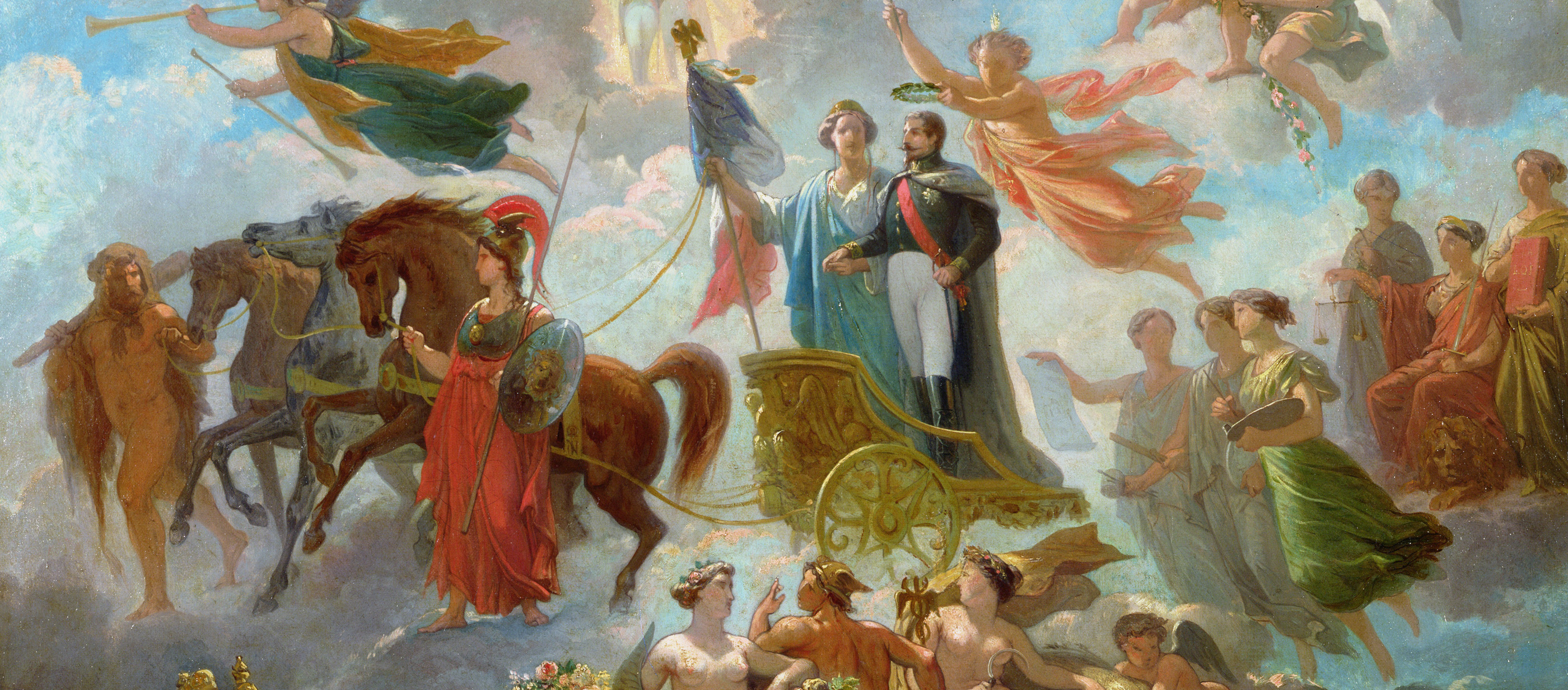
Apotheosis of Napoleon III, by Guillaume-Alphonse Harang Cabasson, 1854. Musée Compiègne, France.
For a long time, I had the impression that Welles had never made another movie and that this was the fault of Hollywood bosses who, caring only for money and not for art, had kicked him to the curb. Then I found out about his second picture, The Magnificent Ambersons (1942), based on Booth Tarkington’s 1918 novel of the same name. I gathered it was a marred masterpiece: RKO had taken it out of Welles’ hands, whittled it down from 132 to 88 minutes, and blessed it with a happy ending. Like Kane, Ambersons is a grim story about wealth and decay, in this instance about the decline of a rich turn-of-the-century Indianapolis family. For years the released version of Ambersons seemed to have vanished from big and small screens—the lost negatives of Welles’ original cut have become the Holy Grail for cinephiles—but it has since resurfaced, and while the studio’s butchering is evident, it remains a work of extraordinary beauty. It was also exactly the sort of film nobody wanted to see in wartime, and flopped.
Welles’ career had reached a turning point. “They destroyed Ambersons, and the picture itself destroyed me,” he later recollected. While RKO was chopping off a third of the film, he was in Brazil making what was supposed to be his third picture, It’s All True, about the lives of Brazilian peasants, fishermen, and ordinary folk celebrating Carnival in Rio. No movie emerged. Rumors spread that Welles was shooting miles of unusable film of people dancing on the beach—an account that doesn’t square with his fastidious work on Kane and Ambersons but that is not entirely inconsistent with later accounts of his disproportionate exposure of celluloid for various never-completed projects. A major aspect of the Ambersons myth has been debunked: though Welles was said to have gone way over budget, a report that forever shaped his image as a director and scared off potential backers, it has been established definitively that he stayed under budget on It’s All True, the rumors being the work of his enemies at RKO. Nonetheless, the enemies won: It’s All True was cancelled—along with Welles’ RKO contract—and much of the Rio footage was given a sailor’s burial in the Pacific. Welles called It’s All True “the one key disaster in my story.” It might also be described as the point at which the media got the upper hand over him in the struggle to shape his image. Earlier he had played the media like a maestro, establishing himself in the public eye as a multitalented wunderkind; now the media wrested back control and began the process of redefinition that led eventually to the obits describing him as a failure, a has-been, a prodigy whose promise was unfulfilled.
Not that Welles’ Hollywood career was over—not by a long shot. While the major studios were loath to bankroll a new project, they were eager to put his famous face on the silver screen. In fact he went straight from Rio to 20th Century Fox, where he played Rochester in the 1944 version of
Jane Eyre—the first of his many performances for other directors. Five years later he played one of his most famous characters, the amoral Harry Lime in The Third Man, a superlative thriller (written by Graham Greene and directed by Carol Reed) about black-market dealings in postwar Vienna. Welles’ larger-than-life public image is reflected in both pictures by his casting as a mysterious figure about whom we hear a great deal before he finally appears onscreen. About this arrangement in The Third Man, Welles said, “Every sentence in the whole script is about Harry Lime—nobody talks about anything else for ten reels. And then there’s that shot in the doorway—what a star entrance that was!” It’s proof of the power of his personality that even though Welles doesn’t turn up until more than halfway through the film—and his entire performance consists of two chase scenes and a single exchange of dialogue with Joseph Cotton—he steals the show.
S uch triumphs, however, were cold comfort. Welles took acting jobs and did so much tacky TV work because he required capital to finance his own directing projects and needed to keep his name out there to impress potential backers. After RKO let him go, his life was that of a freelance director, one who, more often than not, was obliged to put his own money into his projects. He ended up appearing in or narrating over a hundred films (from Moby-Dick to The Muppet Movie), often rewriting his lines and “advising” the director. When the American Film Institute selected the cinema’s top twenty-five male stars in 1999, he clocked in at number sixteen, between Gene Kelly and Kirk Douglas. As the years went by, he became an increasingly sought-after cast member, not just because of his acting talent but also because he was the very personification of solemnity, authority, sophistication. Welles himself said that directors hired him “when they have a really bad movie and they want a cameo that will give it a little class.” He became the king of the cameos, doing single-scene star turns. Few of them provided him with an opportunity to deliver a memorable performance, but most of them contributed to his ever-growing renown. The Welles who popped up as Louis XVIII in Waterloo or as Cardinal Wolsey in A Man for All Seasons was a precursor of today’s reality-TV stars: his very presence caused viewers to instantly unsuspend disbelief. (“Hey, it’s Orson Welles!”) And as he wrapped that majestic voice around the almost invariably portentous lines he’d been given—and had probably rewritten himself—more than a few audience members, I’d wager, didn’t get drawn back into the narrative but instead exclaimed, if only to themselves, “Wow, what acting!”
What is popularly called fame is nothing but an empty name and a legacy from paganism.
Alas, even as Welles became an increasingly familiar adornment to other people’s movies, his own latter-day directorial efforts were either well-kept secrets or quickly disappeared from theaters. After Ambersons, he directed four movies for what were then second- and third-rate Hollywood studios—The Stranger (International, 1946), The Lady from Shanghai (Columbia, 1947), Macbeth (Republic, 1948), and Touch of Evil (Universal, 1958)—plus a handful of others, among them Othello (1952), The Trial (1962) and Chimes at Midnight (1965), most of which were filmed in Europe on shoestring budgets and went into very limited release. There were also innumerable projects that he was never able to get off the ground, and some that he spent years filming on and off but
never completed.
Yet even if Welles had never made Kane or Ambersons, the best of these later films would still qualify him as a director of first rank. In Touch of Evil, a shabby, corrupt, gangster-ridden U.S.-Mexico border town becomes a locus of cinematic power; in Chimes at Midnight, Welles rearranges portions of five Shakespeare plays into a tour de force about the friendship between Prince Hal and Falstaff. Some critics carped: Welles, in their view, had done to Shakespeare what RKO had done to Ambersons. But he argued that if it was acceptable for Verdi to tinker with Shakespeare to make a good opera about Falstaff, he should be able to do likewise to make a good film. Laurence Olivier dismissed his own Shakespearean films as “utterly conventional” alongside the “brilliance” and “originality” of Welles’ versions. These later films didn’t go entirely unnoticed: Welles’ performance as Falstaff earned him a BAFTA nomination; Othello won the 1952 Grand Prize of the Festival at Cannes. Yet few people saw these movies then, and few have seen them since. Their existence even escaped the knowledge of some film-world insiders. When Welles won the American Film Institute’s Life Achievement Award in 1975, the director of True Grit and Airport, Henry Hathaway, protested, “He’s only made one movie.”
Welles had become a movie director because “We’re in the age of film. Film is at the heart of life.” Yet he’d lived well into the age of TV—an age in which people increasingly became famous for no discernible reason—and came to see his image reshaped by the medium in ways he could never have imagined. How many of those who saw him dozens of times on talk shows died without ever seeing a single complete Welles picture? The world applauded him for being a great director, but how many actually watched what he was directing? Businesspeople hired him to hawk merchandise; filmmakers knew he’d give their hackwork a touch of class. He was both great and famous, but by the end there was hardly any connection between these two adjectives.
As Leonard Bernstein learned at about the same time, the problem with earning the reputation of a child prodigy is that no matter what you go on to accomplish—and especially if many influential people aren’t even aware of what you’ve accomplished—you end up being branded a failure, because that, too, is good copy. Why spoil a clear image with a complex reality? So it was that in Welles’ last decades, and following his death, the standard take was that he was indeed a pitiable figure who’d failed to live up to his potential. Mercifully, there were dissenting voices. The day after Welles’ death, New York Times film critic Vincent Canby reacted sharply to the ubiquitous question, “What ever happened to Orson Welles?” His reply, in part: “Nothing ‘happened.’ He directed several of the greatest movies ever made…He didn’t wind up—like some—broke, or forgotten, or as a hopeless drunk, or as a mean-spirited has-been.”
For anyone who has seen those post-Kane movies, Welles’ denouement is as heartbreaking as the last moments of Kane: Welles, who at his death was working on a new film, was almost universally regarded as having spent decades coasting on past glories. One of his biographers, Joseph McBride, spells the irony out succinctly: while such colleagues as John Huston “didn’t balk at directing mediocre movies for hire in order to remain bankable, Welles was heroically unwilling to compromise as a director. But he was willing to do almost anything as an actor/personality…Unfortunately, since the American public rarely saw the films such whoring allowed him to direct, whoring was all most people thought he was doing.”
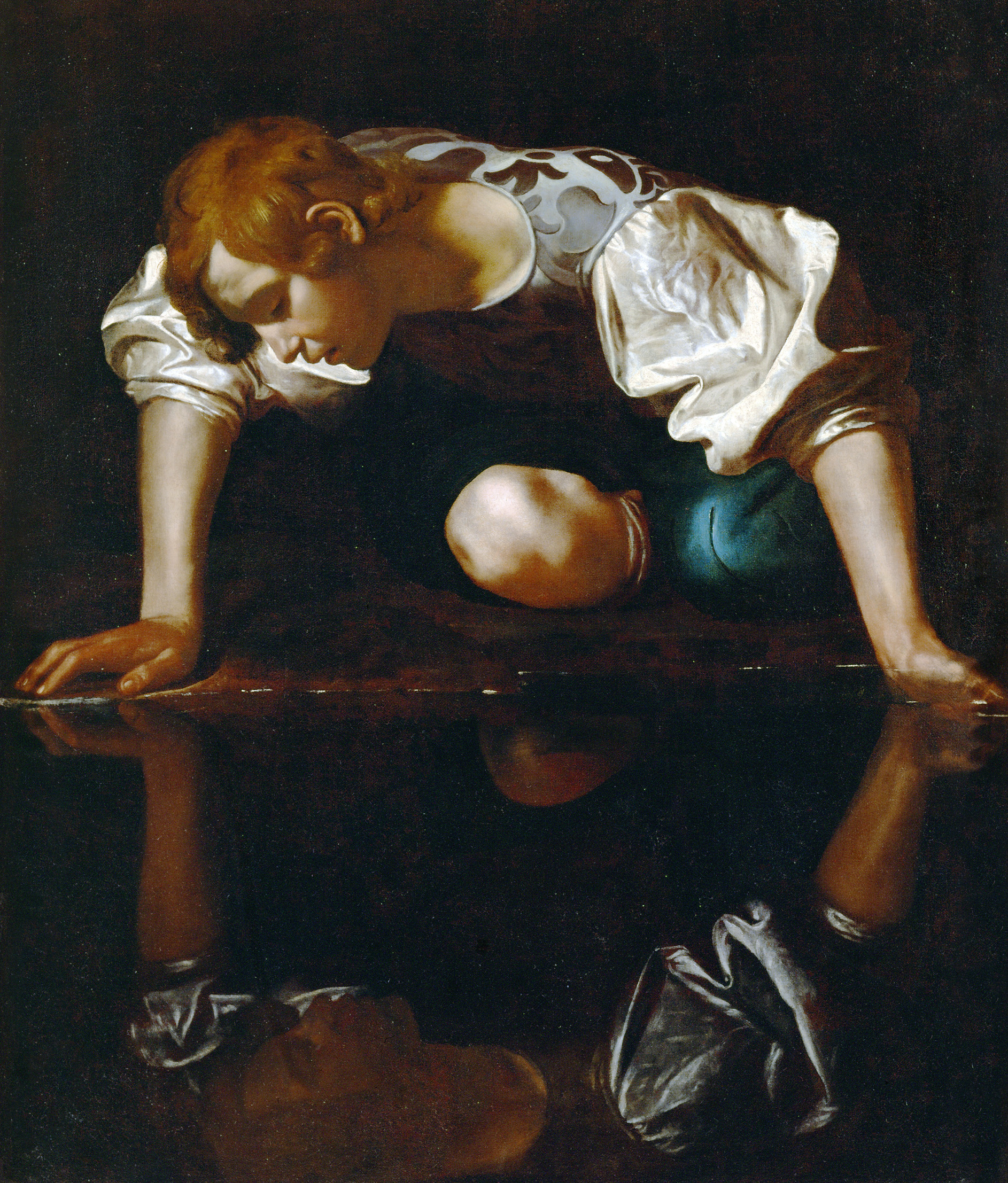
Narcissus, by Michelangelo Merisi da Caravaggio, c. 1597. National Gallery of Ancient Art, Rome.
Welles’ career teaches two immutable truths about Hollywood. If you want to work within the system, you’ve got to play by its rules. You can be, or play at being, a rebel in all kinds of ways—witness Oliver Stone and Michael Moore—but you’ve still got to schmooze the money men. Welles couldn’t do that. “Orson is not a man who can bow down to idiots,” Huston said. “And Hollywood is full of them.” Furthermore, a man who produces great work outside the system and under the mainstream radar while the general public sees him doing mostly nonsense will be perceived accordingly. Welles’ own physical appearance may have been a major factor. That “stuffed cloakbag of guts”—to borrow a line from Prince Hal—simply didn’t look like a hard worker, but rather like a decadent gourmand who’d spent the last couple of decades wolfing down eight-course meals at five-star restaurants, regaling his dining companions with tales of bygone triumphs. And in fact he had spent years doing exactly that. But he’d also been making some of the finest films of his time.
For better and worse, the American movie business is different now. We’re more accustomed to the idea of the director as artist, as auteur. There are more film festivals, more opportunities for independent filmmakers with original visions. On the other hand, fewer films are put into wide release today than when Welles started out, and those that are broadly distributed are rarely pictures of the sort he made. Welles himself in his later years lamented the demise of the old studio system, whose founders, for all their crassness, had at least loved movies in a way that the corporate conglomerates do not. One can’t easily imagine a young, first-time, artsy filmmaker nowadays getting the kind of deal that Welles got with RKO.
Today there are perhaps a half dozen living directors whose fame is based solidly on their directing—among them Spielberg and Scorsese—but in order to keep their careers alive even the most notable of them have now and then had to hold their noses and churn out trash of a kind Welles would never have deigned to direct. Indeed, in an age when talk shows no longer even feign an interest in urbane conversation and when the Internet mints a new round of instant celebrities every week, one cannot even be certain that Welles, if he were alive today, would be able to exploit his fame successfully enough to continue to be a filmmaker on his own terms—which for him, in the end, was the only thing that mattered.

